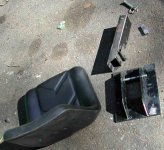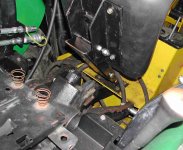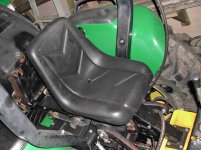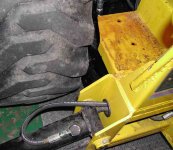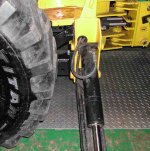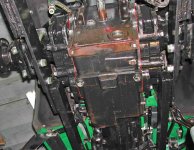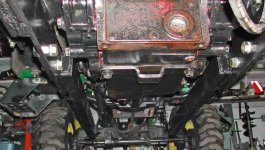Some final notes:
I like to reuse steel that I have, often recycled from leftovers and
other free salvage that I have lying around. I prefer bar stock and
channel, over tubing because pound-for-pound, bar and channel will have
thicker sections which allow for stronger welds. The cost of new steel
is reasonable, however. There is only about 135# total weight of this
subframe.
Each hoe attachment has its own requirements for ground clearance of the
hoe itself. This constraint (12-14" for the Woods 7500/PD7.5) will have
a big affect on the subframe design.
Later, I will post some pix of the 4300 with hoe and FEL mounted, all
cleaned up.
To summarize, here are some suggestions for making subframes:
> Mount the hoe as close to the tractor as possible, limited by the tire-
to-outrigger clearance. Completely modify the seat support to clear
obstacles....only let the seat support control how close-in the hoe is
mounted if the fuel tank is in the way.
> Attach the forward parts of the subframe forward of the tractor's
center-of-gravity.
> If subframe rails are not straight, add cross-members for rigidity.
> For removable connections, use bolts for the strongest, tightest
connections. Loose connections (e.g. pins) lead to hole distortion.
> If the tractor allows, make the subframe wrap around the rear axle and
connect at 4 removable points.
> Use bolt hole alignment aids to assist with mounting the subframe.
> Use existing threaded holes in the tractor's castings when practical. But
do NOT use holes or pins that are required by the 3-pt hitch lower arms.
> Subframe supports that are outboard-mounted are superior to those that
are center-mounted.
> Since manually tightening attachment bolts is difficult, weld the nuts to
the frame member so only one wrench is needed. Check tightness often!

